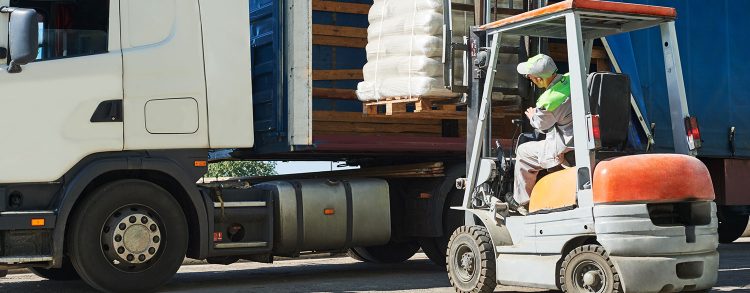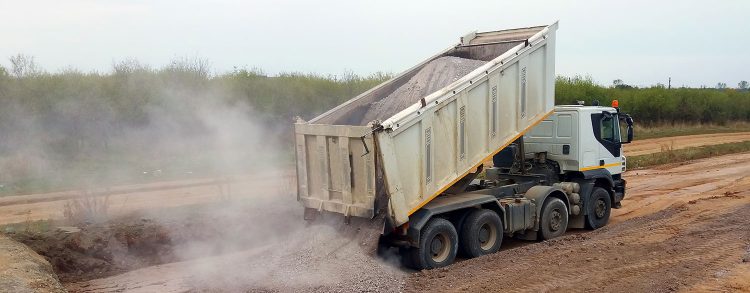ROAD SPEDITION
ROAD TRANSPORT OF GOODS and advantages
Road transport is the most commonly chosen delivery option. Door-to-door delivery and delivery time, as well as the variety of trailer types, are undeniable advantages of trucks.
WHEN TO CHOOSE LTL/GROUPAGE ROAD TRANSPORT?
Less-than-truckload (LTL) road transport allows for the delivery of small batches of goods. Even for dangerous goods (ADR) or food products requiring controlled temperature, road transport as part of a consolidated shipment is possible. Consolidated trucks depart from consolidation warehouses in Poland, Lithuania, the Czech Republic, and their routes are adapted to customs codes and types of goods.
For small orders, during off-season periods, or at the beginning of cooperation with a contractor, it is worth taking advantage of the opportunities offered by less-than-truckload road transport.
ROAD FREIGHT FORWARDING – What is important when choosing a subcontractor?
When selecting a road freight forwarding company, it is crucial to consider their experience in transporting similar groups of goods to the destination country, due to their familiarity with regulations regarding the transport of goods such as dangerous goods, phytosanitary, veterinary, embargoed items, etc. It is also desirable for them to have knowledge of local and transit conditions, as well as proficiency in the language used in the destination country. A well-chosen road freight forwarding company will provide advice on route selection, documentation, and support in resolving challenging situations.

WHAT PROVIDES ADDITIONAL PEACE OF MIND?
Additional peace of mind is ensured by cargo insurance. Clause A provides the broadest coverage, encompassing not only transport-related risks but also risks associated with storing the goods.
Furthermore, when road freight forwarder provides information about the delivery status, we know the whereabouts of our cargo, allowing the recipient to prepare for unloading and import clearance.
CHOOSING A CUSTOMS CLEARANCE LOCATION
When exporting/importing goods to/from third countries, there arises the question of organizing customs clearance. Export customs clearance can be conducted at any location within the European Union; however, we recommend doing it in the exporter’s country of residence to avoid difficulties in proving the export of goods (IE 599).
The agency will assist in obtaining the exporter’s EORI number, register the company in the PDR system, issue a customs declaration (EX1, T1), a certificate of origin, and assist in selecting customs codes.
WHAT TYPES OF SEMI-TRAILERS ARE USED MOST FREQUENTLY??
– Curtain side / Tilt trailer
Dimensions*: l. 13.6 m, w. 2.45 m, h. 2.75 m;
Space capacity*: 90 m3;
Truck load capacity*: up 24 tons gross weight, 33 pallets;
Loading methods: side, top, back.
Description: The curtain side semi-trailer is designed to transport most of the neutral cargoes. Easy loading thanks to sliding side curtains, sliding roof and opening rear doors.
Tilt trailer in addition has rigid side boards several dozen centimeters high for better securing of loads laid loose on the floor.
– Mega
Dimensions*: l. 13.6 m, w. 2.45 m, h. 3.00 m;
Space capacity*: 100 m3;
Truck load capacity*: up 24 tons gross weight, 33 pallets;
Loading methods: side, top, back.
Description: Curtain side semi-trailer with increased height to 3.00m, enabling the transport of loads of bigger volume and height.
– Coilmulde
Dimensions*: l. 13.6 m, w. 2.45 m, h. 2.75 m;
Space capacity*: 90 m3;
Truck load capacity*: up to 24 tons gross weight, 33 pallets;
Loading methods: side, top, back.
Description: Curtain side semi-trailer equipped with a kind of basin – a special notch with a depth of about 30 cm and a length of 8-9 m built into the floor. This type of semi-trailer is used to transport heavy drums, cylindrical tanks or large metal rollers.
This construction of the floor allows a very stable location of the load.

– Isothermal (box)
Dimensions*: l. 13.6 m, w. 2.45 m, h. 2.70 m;
Space capacity*: 90 m3;
Truck load capacity*: up to 24 tons gross weight, 33 pallets;
Loading methods: back.
Description: Hard-sided semi-trailer with rigid walls and roof. It is most often used for the transport of high value cargo.
– Frigo
Dimensions*: l. 13.6 m, w. 2.45 m, h. 2.65 m;
Space capacity*: 88 m3;
Truck load capacity*: up to 22 tons gross weight, 33 pallets;
Loading methods: back.
Description: Hard-sided semi-trailer equipped with a refrigeration unit, which allows maintaining the temperature of the goods in the range from -25oC to + 25oC. It is most often used to transport loads that require specific temperature conditions, e.g. frozen meat, fresh fruit, chocolate, medicines.
– Jumbo 110-120 m3
Dimensions*: l. 15.4 m (7.7 m + 7.7 m), w. 2.45 m, h. 3.00 m;
Space capacity*: 110-118 m3;
Truck load capacity*: up to 24 tons gross weight, 38 pallets;
Loading methods: side, top, back.
Description: Jumbo consists of two tarpaulin parts: a truck-integrated loading space and a trailer. Increased dimensions allow the transport of loads with large volumes (polystyrene, mineral wool, furniture, large household appliances).
– Flatbed
Dimensions*: l. 13.6 m, w. 2.55 m, h. 1.04 m;
Loading methods: side, top, back.
Description: semi-trailer without any body usually intended for the transport of oversized loads.
– Container chassis (A tractor with a frame adapted to transport sea containers 20-45ft.)
* Dimensions, volume and load capacity of individual trailers may vary depending on the manufacturer.

